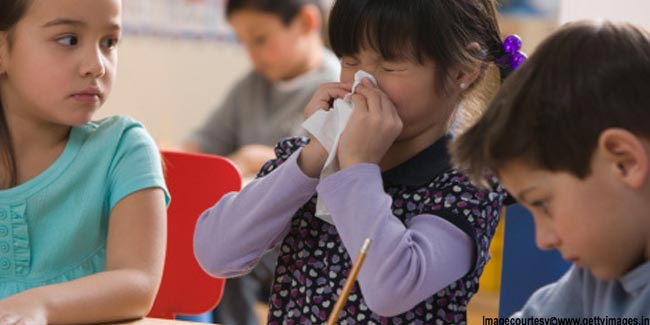
 Experts have observed an increase in the cases of various allergies among children recently. The allergy which affects the nose called allergic rhinitis is normally seen in teenagers. But more and more young school-going children are getting affected by it. Breathing in an allergen such as dust, pollen, insect venom, chemicals triggers the allergy.
Experts have observed an increase in the cases of various allergies among children recently. The allergy which affects the nose called allergic rhinitis is normally seen in teenagers. But more and more young school-going children are getting affected by it. Breathing in an allergen such as dust, pollen, insect venom, chemicals triggers the allergy.
Noticing that food allergies particularly have increased among children as compared to a decade ago, experts say that the most common ones are asthma, eczema, urticaria (skin rashes) and those related to food.
A history among parents comprises of about 30-50 percent cases of allergies in children. Unlike the past, the cases of asthma, symptoms akin to the condition are being diagnosed in one-year-old infants. Normally it is seen in those above two years.
While the main cause of eczema is dry weather, around one-third of children with eczema are also prone to food allergies. Doctors believe that egg is eight times more likely to cause eczema than any other food.
Food products that are commonly known to cause allergies in the West are milk, nuts and sea food including fish. But India is witnessing cases of allergies because fruits and pulses also. The problem of food allergies was noted frequently in children of NRI families.
Drugs and insects too act as potential allergens. Other factors causing allergies among children are:
• Less exposure to microbes during immune system development before school age
• Changing lifestyle
• Pollution
Significant morbidity by affecting sleep and performance at school happens to be the impact of most allergies while asthma anaphylaxis could prove to be life threatening.
World Health Organisation (WAO) has predicted that about 50 per cent of all children would have some sort of allergies by 2050 if the rising trend continues. The prevalence is raising dramatically both in developed and developing nations.
Table of Content:-
Read more Health News.
How we keep this article up to date:
We work with experts and keep a close eye on the latest in health and wellness. Whenever there is a new research or helpful information, we update our articles with accurate and useful advice.
Current Version